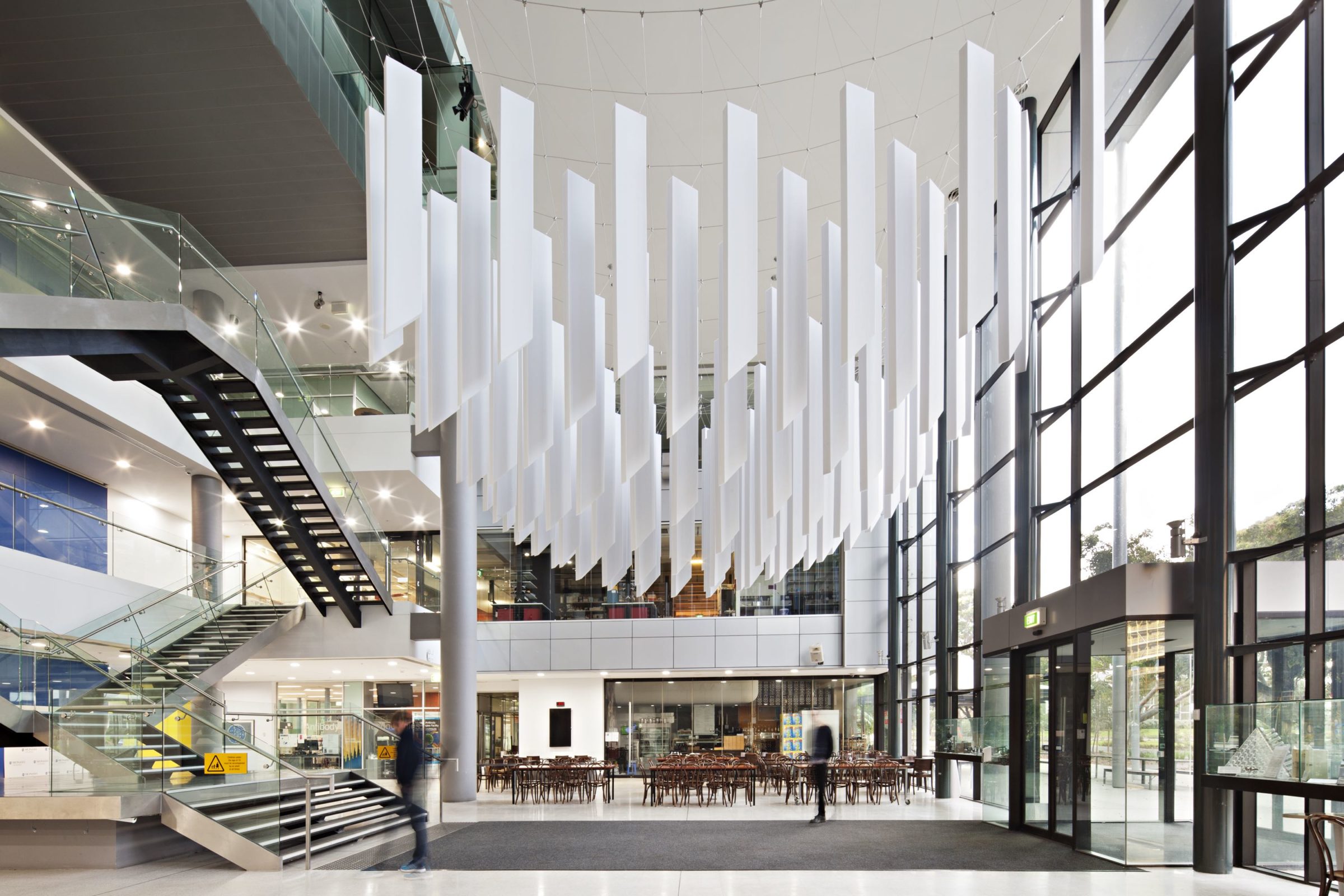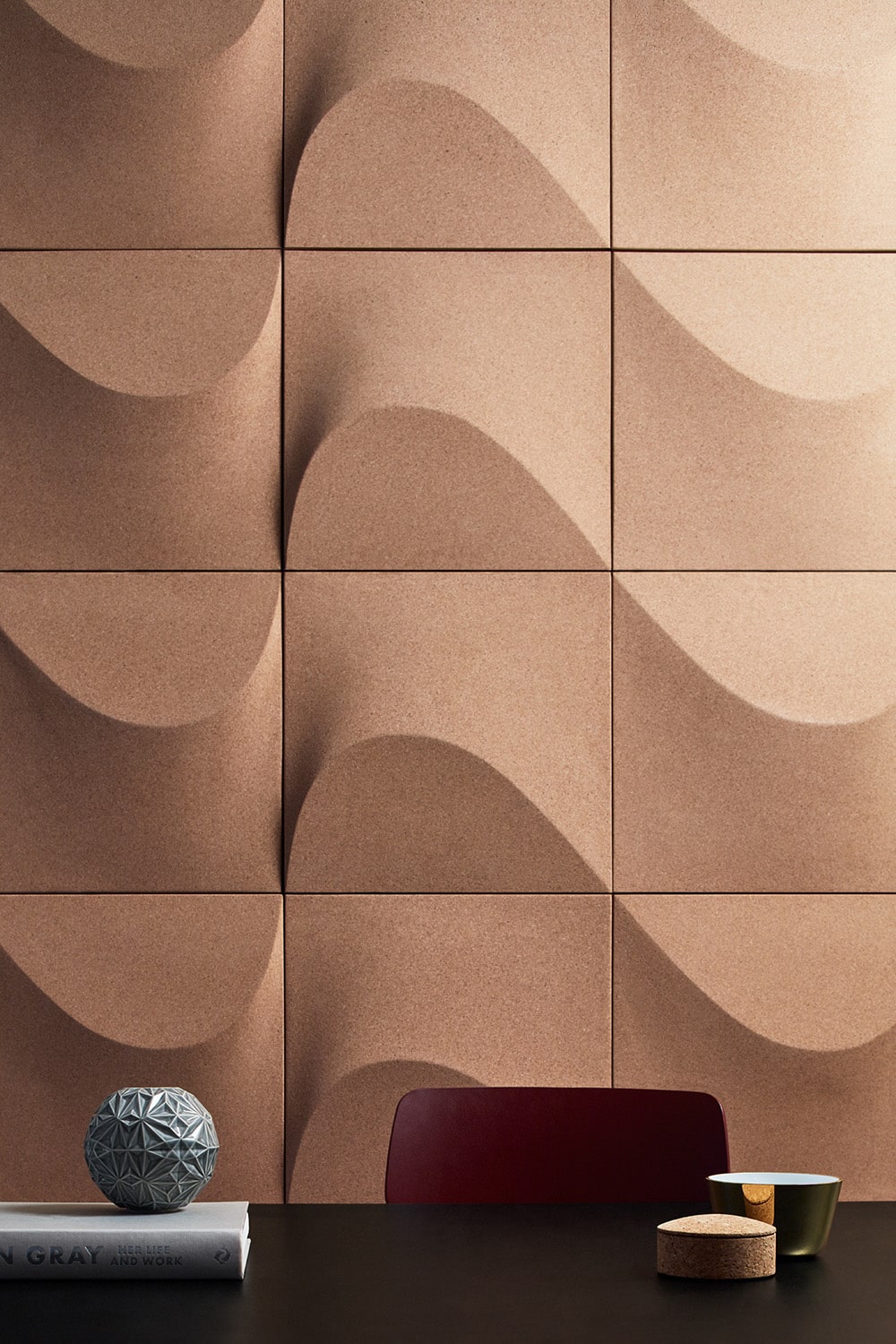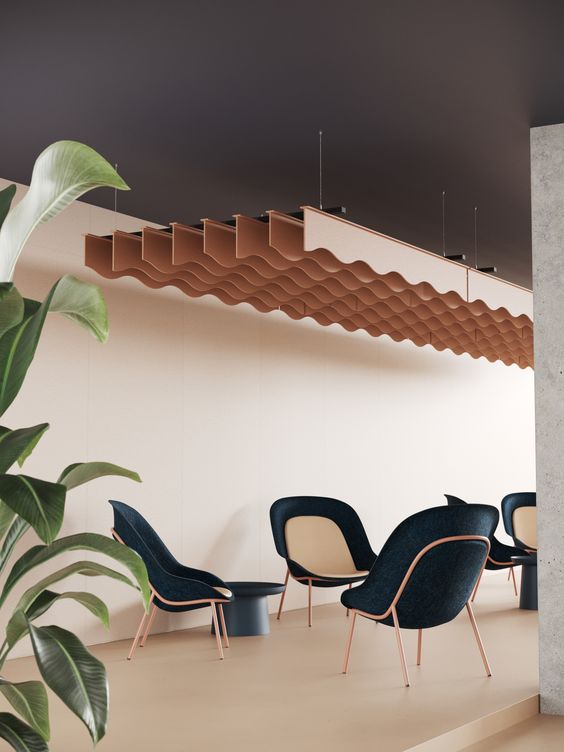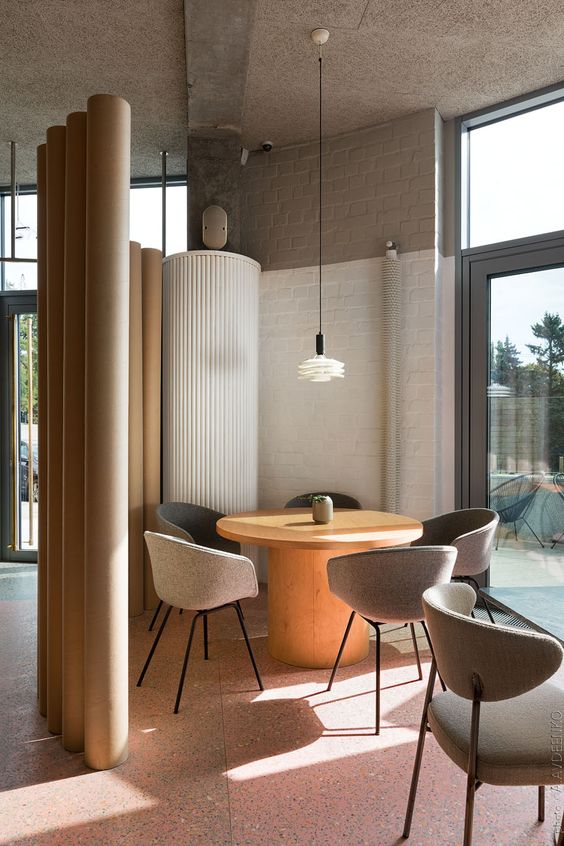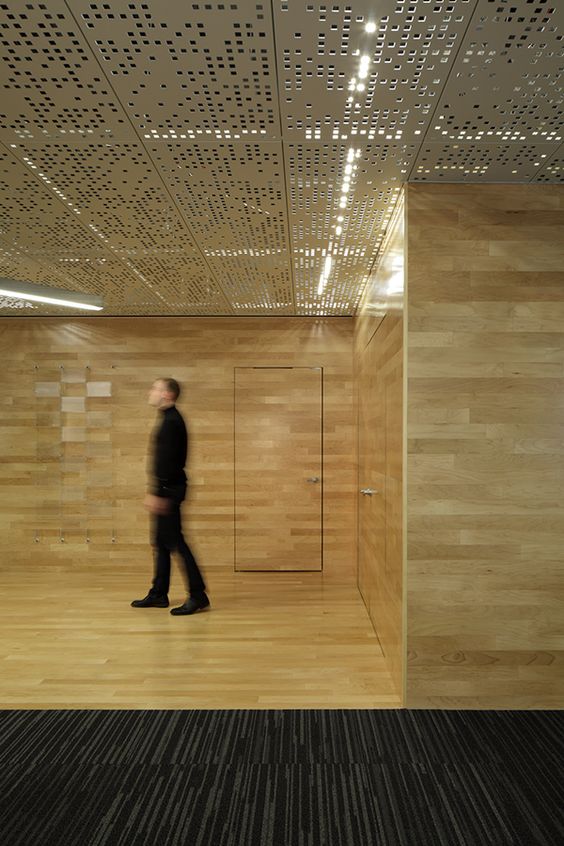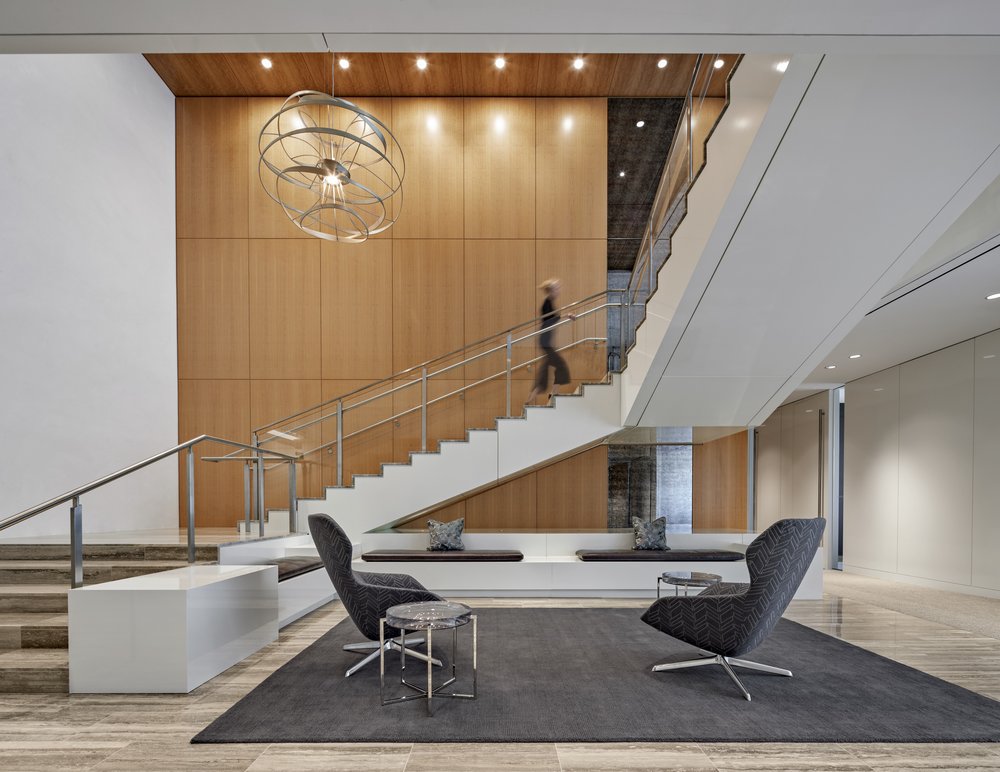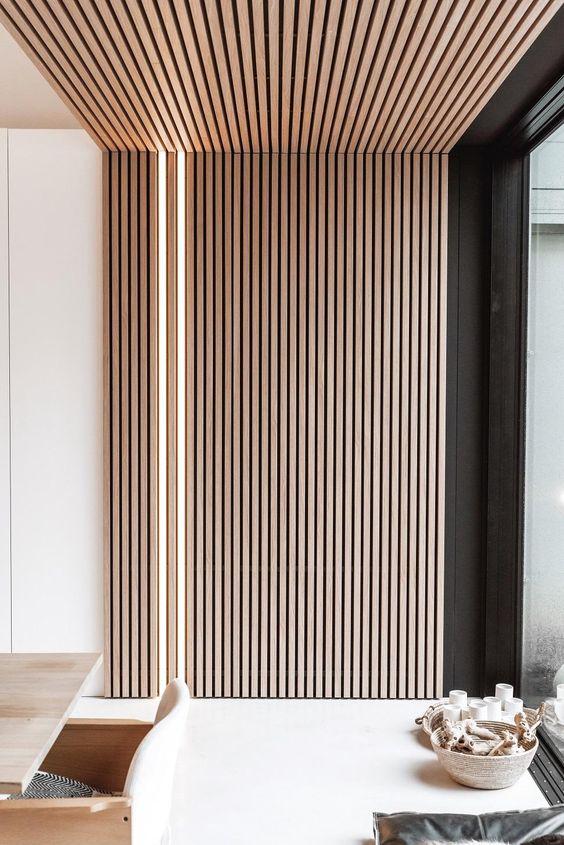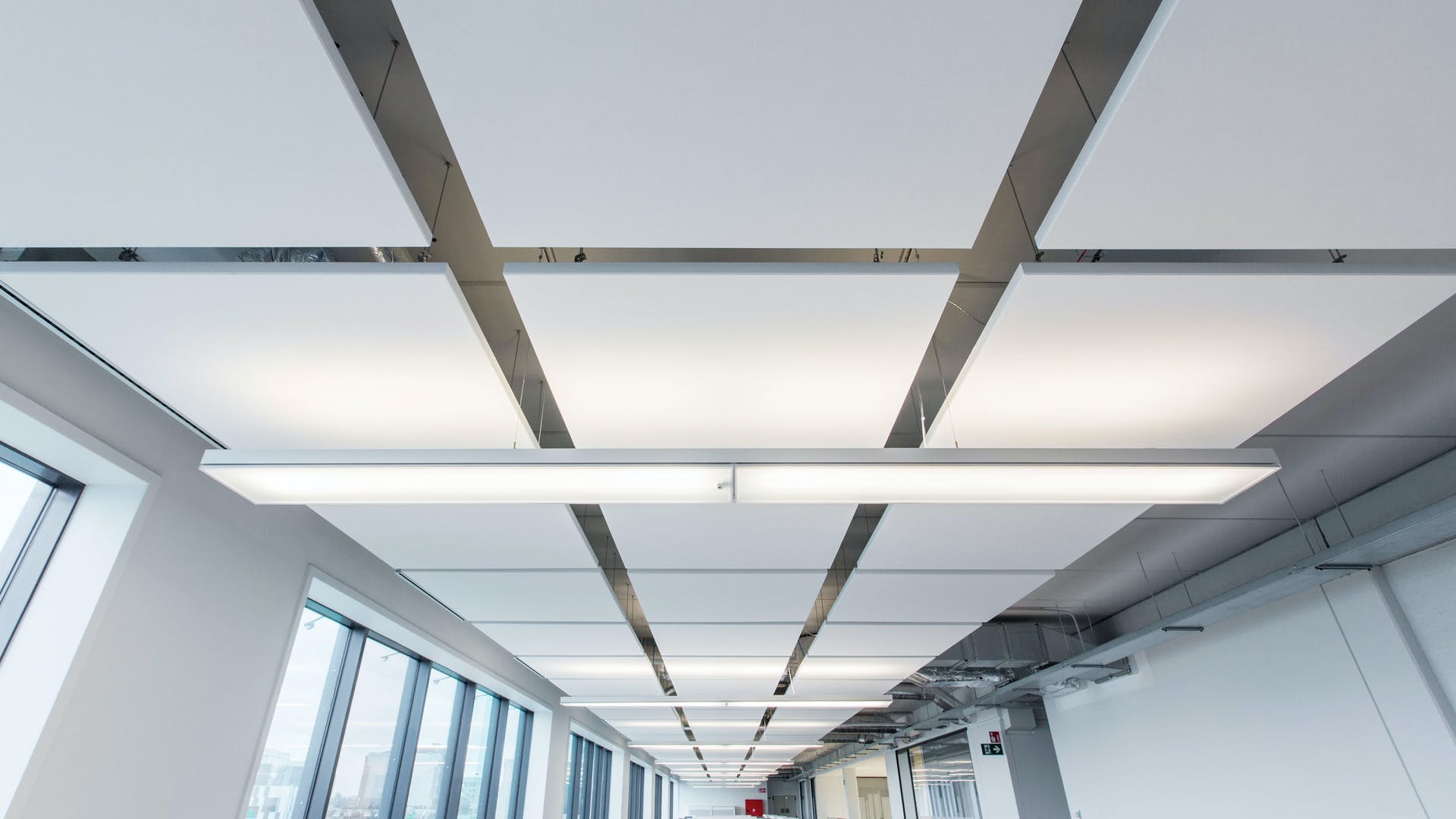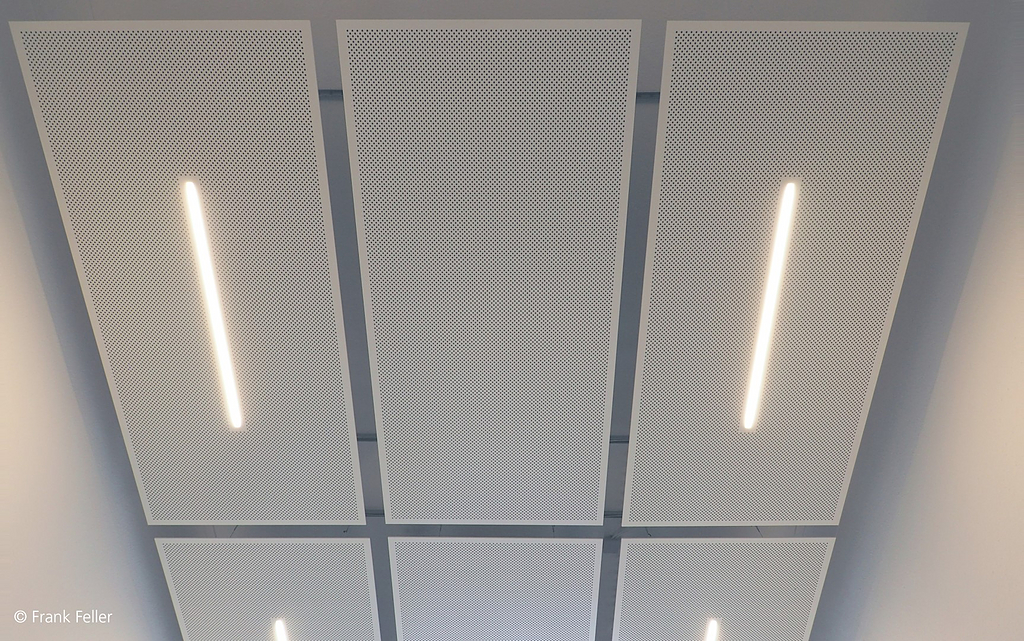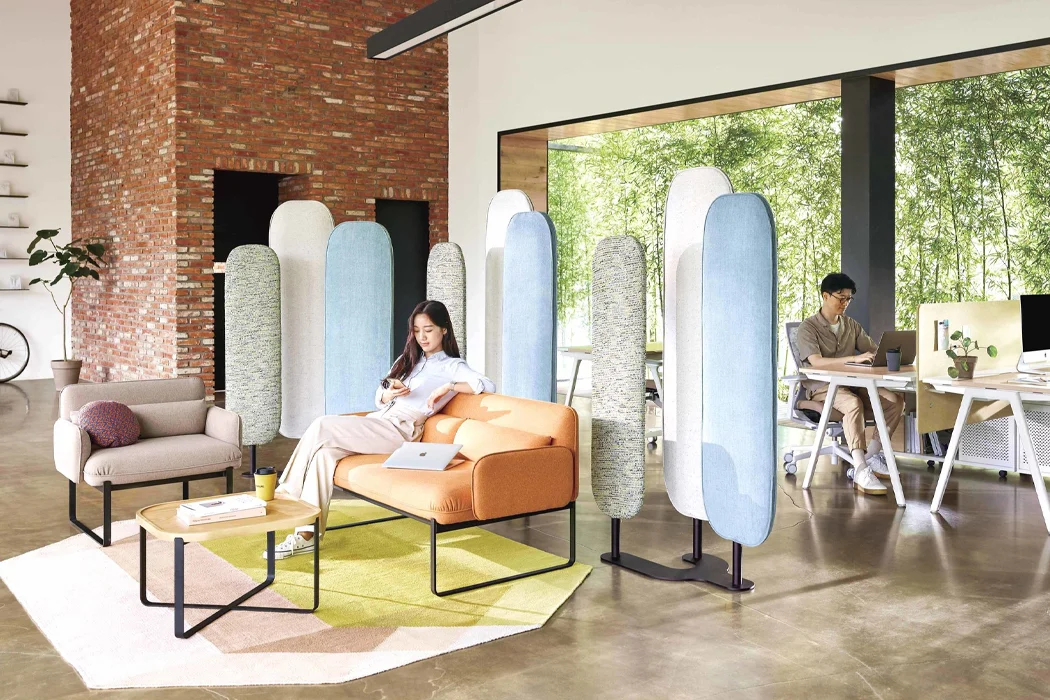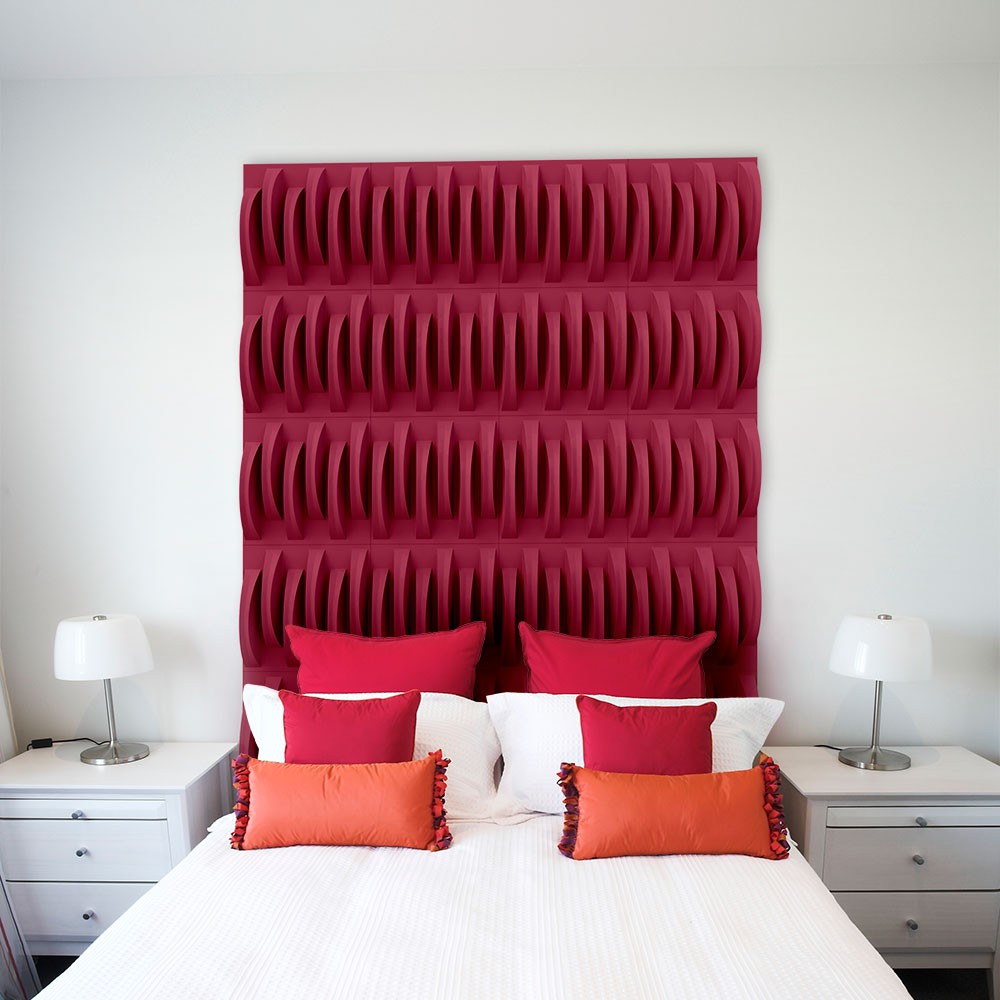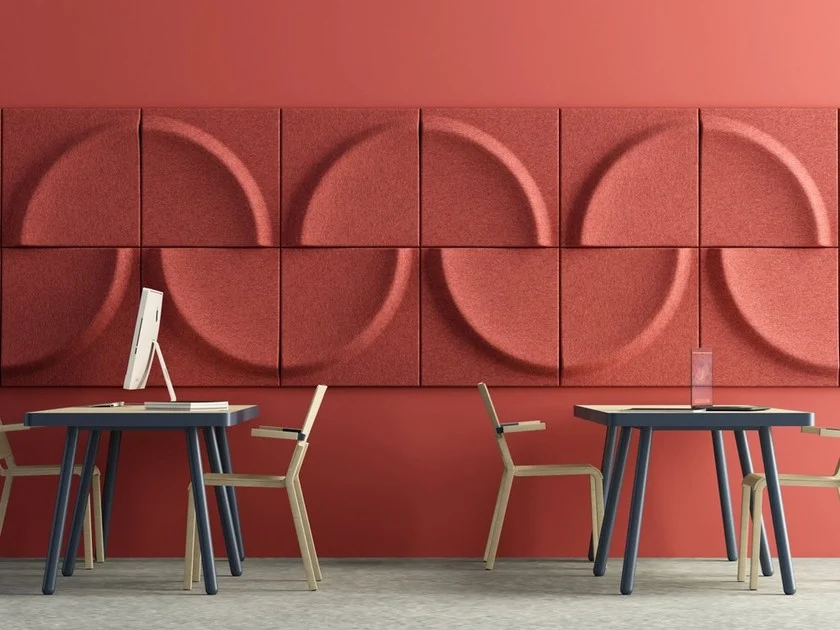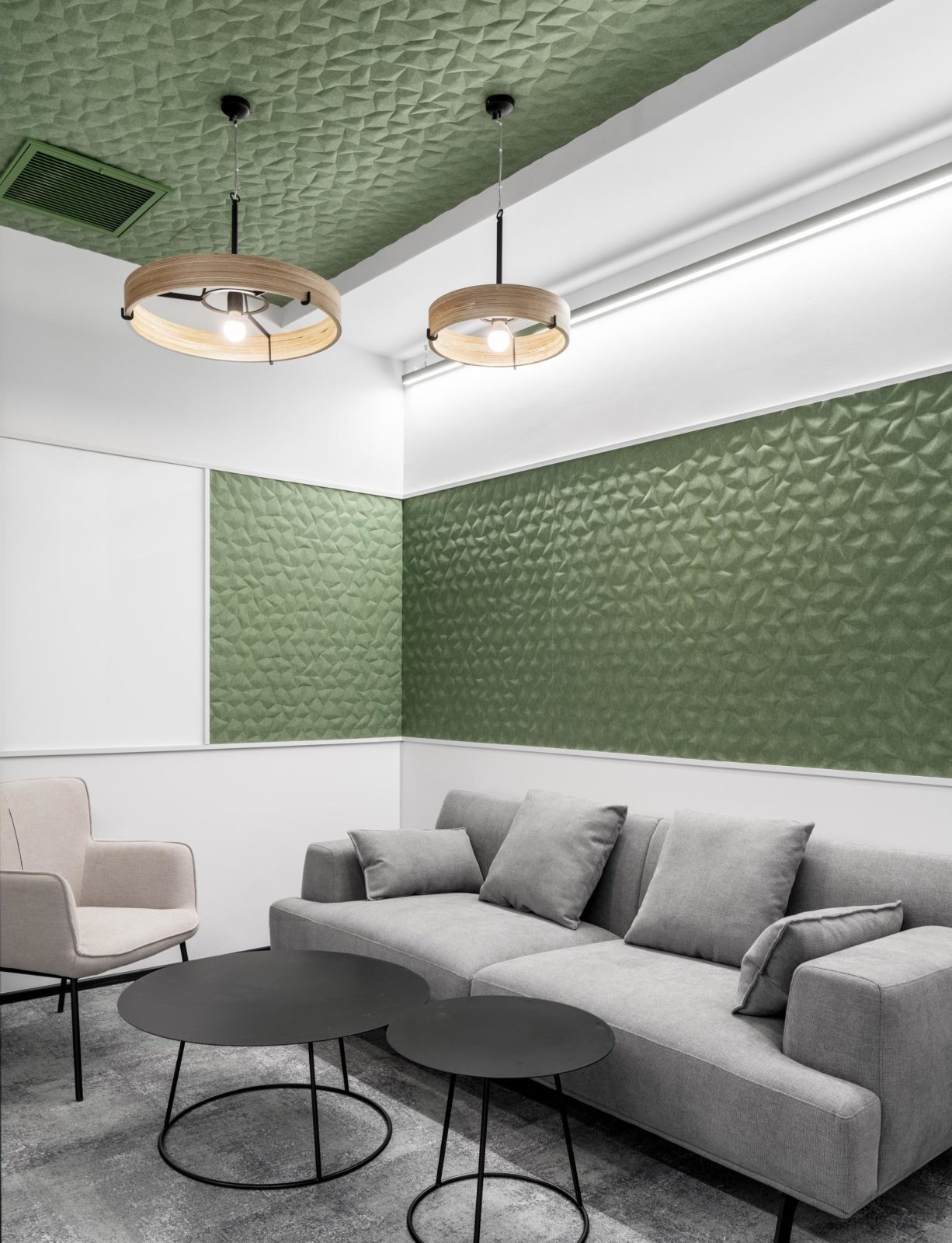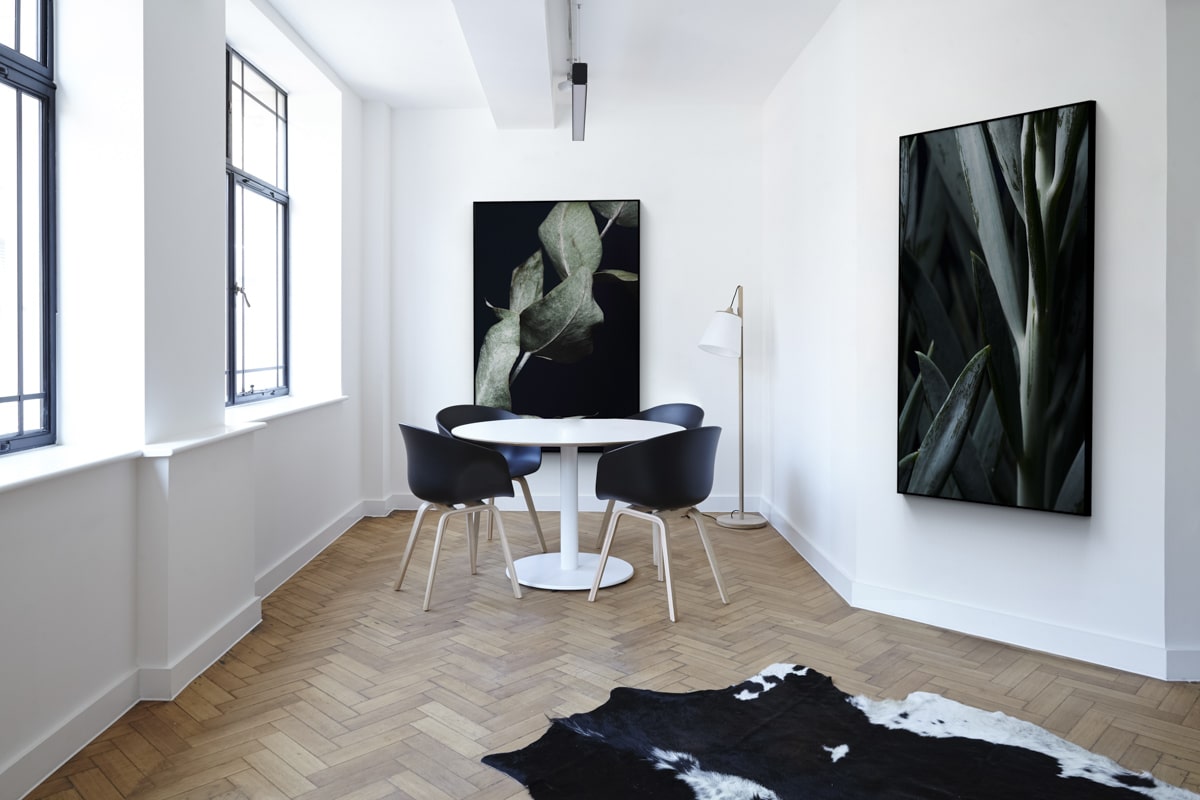Acoustic Panels are usually underthought in most architectural projects, resulting in noisy, chaotic spaces where sound echoes or falls dead, and people can barely hear each other—sometimes sabotaging the main purpose and function of the space. If you can not quite hear your teacher in the lecture room, or if you can hear everybody else’s conversations in a cafe but your friends; this is poor acoustic performance.
Before delving into the types and examples of acoustic design, it is important to understand how sound waves behave within a room. When sound waves travel from the sound source, some of them might drop dead -if the space is large-, and the rest will bounce against a hard surface like a wall, a ceiling, or an object. When the latter happens, some sound waves will be absorbed by the surface’s material, part of them will pass through the surface, and another part will reflect back into the room.
A place with an adequate acoustic performance will achieve a balance between absorption and reflection according to the use of the space.
Acoustic Panels Types
-
Wall-Mounted Acoustic Panels
Wall-Mounted Acoustic Panels offer a great variety in design, they can lay flat parallel to a wall or perpendicular to it, improving the acoustic performance of the room with their absorption and reflection features. Moreover, they give the opportunity to the designer to experiment with art in more than one way. The varying installing methods allow for different materials to be used, as well.
Wall-mounted panels are usually used in small rooms, where sound waves typically first bounce against the walls as they are the closest hard surface to the sound source—in this case, the wall-mounted panels absorb the sound.
-
Suspended Acoustic Ceiling Panels
Even ceilings with networks or lighting and wire tracks can take acoustic panels. Suspended panels, alternatively called acoustic clouds, can be effective in such cases. They give a modern, industrial appearance while offering the needed noise absorption and echo reduction.
On the contrary to wall-mounted panels, suspended acoustic ceiling panels are used in larger spaces where sound waves will travel a longer distance to bounce against the ceiling.
-
Free-Standing Acoustic Panels
In spaces that are already designed and constructed or where walls or ceilings can not take acoustic panels due to design or functional reasons, free-standing acoustic panels can do the job effectively. Moreover, free-standing panels can double act as acoustic treatments and as room dividers, which makes them perfect for spaces like open-plan offices and classrooms.
10 Acoustic Panels Examples to Upgrade Interiors
-
Perforated Metal Acoustic Panels
In spaces where acoustical treatments are needed without compromising durability and aesthetics, acoustic panels that are made of perforated metal skins enclosed in acoustical sound absorbers will perform perfectly. These metal panels offer maximum noise absorption and the needed strength while being able to fit the room’s aesthetics—this is why they are mostly installed in gymnasiums, industrial fabrication areas, airports, and concert halls.
-
Micro-Perforated Acoustic Panels
Micro-perforated panels have gained architects’ and interior designers’ attention recently because of their ideal acoustic performance—they offer excellent sound absorption without the downsides of porous materials, this makes them perfect for certain spaces where small particles or dirt exists. Moreover, they give the same look of solid material for a cleaner and more minimalist design aesthetic.
-
Timber Acoustic Panels
More than the great warm aesthetic they give, timber acoustic panels offer class A sound absorption. They are designed to minimize noise and echoes and filter sounds according to desire. They come in a wide range of acoustic options in terms of dimensions, slots, and perforations, hence they can fit the design you have in mind. Moreover, and just as important, they can be flame retardant.
-
Plasterboard Acoustic Panels
Plasterboard panels offer a good level of acoustic performance because of their high density—as a rule of thumb, the higher the mass of a material, the better soundproofing it offers. Plasterboard panels are better at blocking and absorbing sound energy, this is why they are effective in areas where sound reduction is needed.
-
Aluminum Acoustic Panels
Aluminum perforated panels offer great durability featured besides their acoustic performance. They are lightweight, anti-corrosion, and alkaline-resistant. They can be applied both indoors and outdoors, but they are preferred as highway sound barriers. Aluminum acoustic panels can offer better soundproofing performance when fitted with fibers and foams.
-
Fabric Acoustic Panels
In indoor spaces where speech intelligibility is crucial like meeting rooms and lecture halls, fabric panels will offer just the needed acoustic performance. They decrease reverberation and minimize the eco of sounds generated in the room, hence upgrading the overall quality of sound. Moreover, they can decrease the transmission of some sound frequencies between rooms. Fabric panels come in a variety of textures and shades to fit all design tastes.
-
Paper Acoustic Panels
It may sound against logic, but paper can actually work as a sound absorber. Paper fibers are porous and can be processed in a certain way and controlled enough to enhance their acoustic performance. Moreover, they can be made from recycled paper which makes them entirely sustainable. Paper panels can be used in houses, meeting rooms, waiting areas, and events halls.
-
Polyester Felt Acoustic Panels
Polyester felt panels are naturally lightweight and durable, hence they are ideal for acoustic paneling. This material is vividly present in most modern interiors nowadays because of its versatility; polyester panels can be easily cut, and they offer a variety of color options and countless shapes and forms.
-
Plastic Acoustic Panels
Plastic panels, much like paper panels, offer variety in their shapes and colors while still having the option of being recycled—however, plastic panels offer more durability and strength than paper ones. Moreover, the former can be printed or transparent with either a polished or matte surface finish. With these great upsides, they can be used in almost all types of spaces.
-
Acoustic Art Panels
Printed acoustic panels or alternatively called acoustic art panels comprise printed images that are wrapped around a panel made of an acoustic absorptive material like fabric or fiberglass. One of the great advantages of these panels is that they are highly customized.


